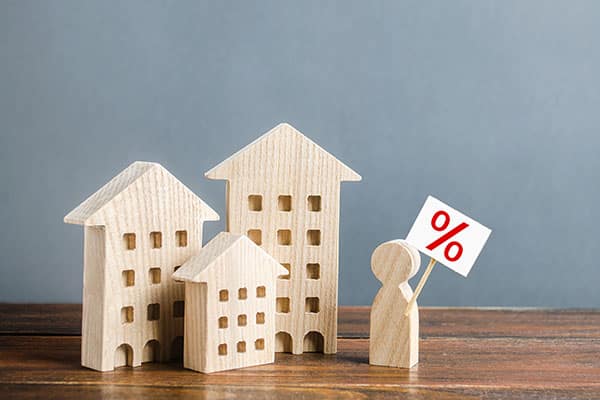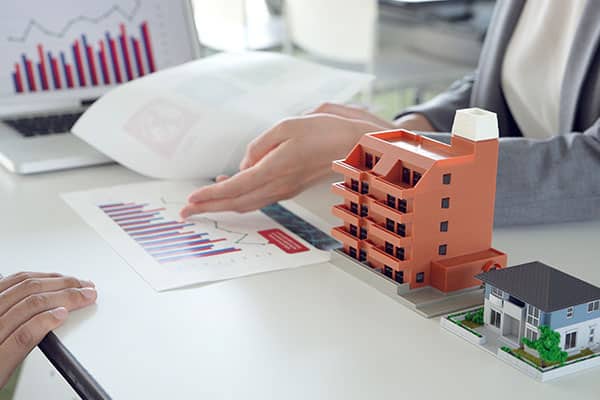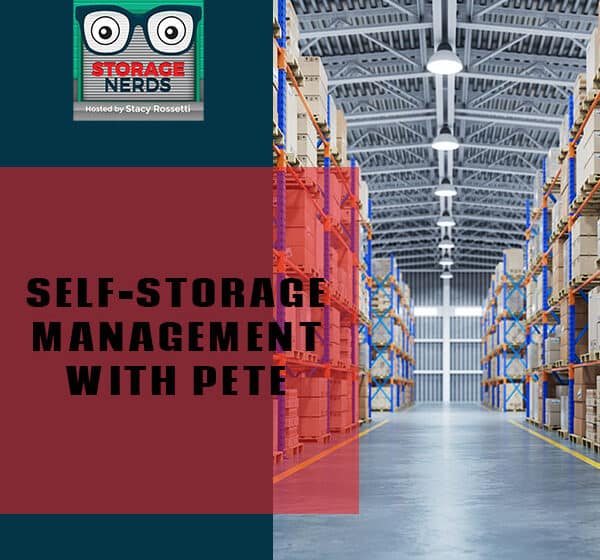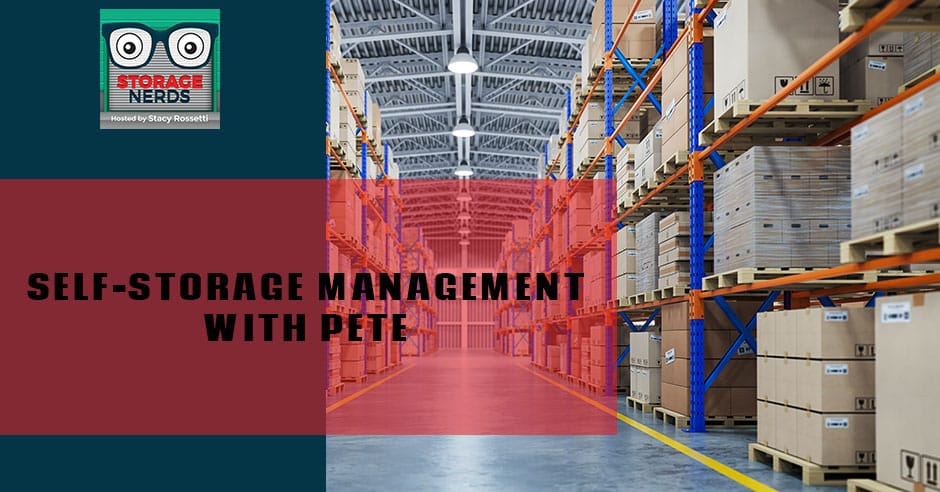Interesting things are happening in the real estate market cycle. The question is, how will this impact the storage industry? Here to guide you is your host Stacy Rossetti. Where is the market cycle headed, and what should you do to prepare for what’s to come? Stacy shares key business and investment moves you need to consider when looking for storage facilities to purchase. She also discusses the different impacts this may have on the primary, secondary, and tertiary markets and how owners should respond where they can push rents and keep their tenants happy at the same time. Don’t miss out on more advice from Stacy by tuning in.
—
Watch the episode here
Listen to the podcast here
Self-Storage Management with Pete
I wanted to talk about the market. There are a lot of questions about the market. I follow a lot of different data companies closely. I’m one of these data nerds who follow Redfin, CoreLogic, and a lot of real estate investing and real estate outlets. I don’t follow a lot of people on social media, but I do watch a couple of YouTube people as well. I’ve been trying to keep on top of how the real estate market is going.
The Real Estate Market Cycle
I wanted to talk a little bit about that because I’m in a private group for storage investors. There was a question that came up about this. There are some people out there that are talking about the market. My topic is going to be how the residential real estate market is going to affect the storage industry. That’s my topic. I don’t have graphs and charts because you can go on to Redfin or CoreLogic and look at this. I wanted to show you a couple of people that I follow and listen to. I’ve been following for a while, but I like smart people in the industry.
I wanted to get your opinion, too. I would love to know what you all think about what’s going to happen. Do me a favor and let me know. Do you think about the real estate market and what’s going to happen? Is this something that is not on your radar? Do you follow anybody? I will love to know if you follow people who you follow. I would love to learn who everybody follows and see what everybody’s opinions are out there. The truth is if you go to YouTube and you type in “residential real estate” you will get a ridiculous amount of videos coming up of people talking about real estate.
If you talk about the real estate market and google that, or if you look on YouTube and try to watch videos, you get so many different types of videos. If you go into YouTube and you type in commercial real estate, nothing comes up. Hardly anything comes up. If you type the storage industry or storage market, hardly anything comes up. There are not a lot of people that get out there and talk about commercial real estate.
I’m not the person to do this. I would love for somebody to be that person that’s the commercial real estate guru, the commercial real estate market data person. Marcus & Millichap does some videos and webinars, but I feel Marcus & Millichap are so high-level. A lot of times, I go to all their webinars and try to listen to what the stats, data, and stuff are. I feel the people that are in their webinars are always big players or super big players.
It would be great to have somebody in the world which represented the regular people and all of us. What’s going to happen in the market? This is what I’m thinking all the time. I’ve been thinking this for years ever since before COVID because I know that the real estate market goes in cycles. It’s a pop quiz. Does anybody know how long the market is in an upcycle or downcycle? Over the last 100 years, what’s the average of an upcycle and downcycle?

Historical data says over the course of 100 years, an upcycle and a downcycle take this much time. We know that the real estate market is a cycle. There are a lot of ups and downs. In the past few years, there’s been nothing like this ever. When you start looking at data, you see data going up and down like this and then in the last few years, it’s starting to go down. It’s been so volatile. Everything has been so volatile in the last few years.
A real estate market will last anywhere from 8 to 12 years. The whole cycle will last 8 to 12 years on an upcycle and then a downcycle. Since 2008 or 2009, maybe we’ve been in the upcycle. We’re coming down twelve years later. This cycle has taken a long time. Sometimes the cycles are around 8 years and then sometimes they’re 12. Now in 2022, we’re in year 12, going into 13 or so, but this has been a long cycle. The question is, what’s going to happen in the next few years? Everybody knows that the interest rates are going up on the residential side. They just went up by 50 basis points. Interest is going up.
I don’t know if you guys are in Facebook groups or not, but you guys tell me what you all are seeing out in the world. I’m in one Texas Facebook group for real estate investors. There was a post about a person that just got a loan on an investment property. He’s paying 6.67% interest. He put 20% down. That’s a high-interest rate. It’s not as high in comparison to what the historical data shows. Back in the day, people were way up high. It’s high compared to what normal people know.
What’s Going To Happen To The Market In The Storage Industry?
In my mind, I’m thinking in terms of storage owners and storage facility owners. What is going to happen to the market over the course of the next few years in the storage industry? That’s the question of the day. I got off a coaching call with the student. I would’ve gone into this with him and given him my $0.02. Our coaching call was coming to an end and I had to jump off the call. Essentially, he’s looking at a storage facility in New York, in the Finger Lake Area. It’s a 90-unit facility. There were about 12,000 or 13,000 square feet.
It was making a little bit over $100,000 a year. The owner wants $800,000. If you run the numbers on this on an 800-unit facility that’s making $100,000 and it’s 100 units. It came out to the value of $900,000 at a six cap. That was one thing that I talked to my student about. It’s a question of the day when you run the analysis. What’s the typical market cap rate going to be? We were running those numbers at a six cap because it’s New York. New York tends to be more expensive, so we were looking at it this way.
It’s the Finger Lakes Area. I don’t know if it is considered a tertiary market? I’m not sure, but I would say secondary to tertiary if you guys know this area. I do know this area well. It’s beautiful. I had a student buy a facility in Binghamton. I remember the numbers that she had as well, too. That’s why I know the typical area is around like a six cap. We were running the numbers, $800,000 purchase at a six cap, and it was making around $100,000. It was $108,000. It was about 12,000 square feet and it was 99 units or so. It came out to a valuation of $895,000. The taxes were about $25,000, $23,000. There were no utilities or anything like that.
A real estate market will last anywhere from 8 to 12 years on an upcycle and then a downcycle.
We’re looking at the numbers. He was saying, “Would you buy something like this?” Personally, when I see income-producing property deals, that’s a typical income-producing property deal for me. Those are the type of deals. When you see that, you want to hold onto those. That’s a good buy-and-hold property. We were looking at the competitive analysis. All my students essentially fill out a sheet where you do the competitive analysis. You look at all the competitors.
In the area, there were a couple of competitors. We were looking at climate-controlled versus non-climate controlled. In the area, he said that he called all the competitors and the non-climate-controlled was not filled, but the climate-controlled was filled. Maybe in New York, people want heated storage for the winter when they want air conditioning in the summer. I’m not 100% sure. One of his competitors was Bolt. Bolt is a bigger company that owns a whole bunch of storage facilities in New York, but they are spreading out. They’re going east and all over. The owner lives in Georgia.
There was one other competitor whose prices were way above everybody else’s. They were at for a 10×10. It was $125 a month, whereas everybody else was $60, $70, or $80 a month. I see all the competitors and these were for non-climate-controlled units. My student had said he called all the competitors. Some of the competitors had climate-controlled and non-climate-controlled. All the ones that had non-climate-controlled were not 100% full. They were anywhere from $60, $70, $80, 90% full. If you had climate control, you were full. Everything was full.
My thought for that is, “What does New York call for? Does New York call for climate control?” Overall in the industry, it’s an 80/20 rule. You guys tell me if you see something different, but I see 80/20. 80% is non-climate-controlled, 20% is climate-controlled. There might be a little bit more climate-controlled coming out, but there wouldn’t be any more than a 70/30 split. Most of it is going to be non-climate-control. Maybe in that area, that calls for climate control. In terms of market, I’m thinking of competitive analysis. I’m looking at that deal.
I told them, “Put an offer in,” because the guy wants an offer to sell his facility. You put an offer in even if the offer is not what he’s asking for. He’s asking for $800,000. The student was a little bit hesitant, first of all, because it’s not like a smoking hot rocking deal. The truth is that your first deal is not like a home run. Your first deal is, “Let’s get our foot in the door and get this going. Let’s create some momentum. Let’s get out there and do this.” If you sit there and you’re waiting for your first deal to be a smoking hot deal, which I see a lot in my students, I’m like, “Put the thing under contract. It doesn’t matter. Let’s try to figure out what we’re doing.” Miss out on all the opportunities.
The truth is that there are a lot of people out there that would buy that facility. It’s at a six cap. It’s worth $900,000. You’re going to pay at the most $800,000 because that’s what the guy was asking for. Essentially when we looked at the competitive analysis, you could take it from $0.72 a square foot to a minimum of $0.80 a square foot, but maybe even more. You’re going to create that appreciation over time and have a little bit of money on the back end when you sell the facility. That was going to go from $800,000 to about $1.2 million in a few years.

That’s a good buy-and-hold facility. First and foremost, when you come across deals. Even if it’s just an okay deal, it could be a good buy-and-hold strategy. That’s what you want to look at. You don’t want to pass up those deals. You don’t want to pass up a deal, even if it’s just an okay deal. I had one student in Storage Nerds that was like, “I’m going to go out there and find some deals.” She bought three facilities and every deal she found was okay. They were not smoking deals but okay deals.
She’s had them for two years and she’s going to sell one. She’s going to make $200,000 on it by selling it. That’s a pretty good deal for me. Don’t pass deals up that you don’t think are going to be good in regards to the market. You’re going to have to consider a deal this in New York that we find as an okay deal, knowing that I’m going to have to hold onto this deal until after we get past what’s happening in the next few years. We can see what’s going to happen. Is the storage industry going to cool? I don’t know.
When COVID hit, you all know what deals we own. We own deals that are smaller, secondary, or tertiary market facilities. We were already virtual even before COVID hit. Everybody went online to make a reservation. We have phone support. We have boots on the ground people that go and manage our facilities for us. It was mostly virtual for us. When COVID hit, we didn’t have that big of a deal because a lot of storage facilities in the industry were not contactless. You already know this.
I talked to one lady in the past. She works at one of the big REITs. She wants to buy her own facility. She works at a facility that has 722 units. She’s the office person. If you come in and sign the contract or you want to pay your bill or something, she’s the one that does that. She has to clean out all 722 units. She locks, unlocks, and all this stuff. It’s a huge big facility and she makes $13 an hour doing that. She says that she’s running around like a crazy person all week long when she works Monday through Friday.
That’s not contactless. Even some of the bigger players still are not contactless. You still have to go in and sign the contract. I had talked to her and that’s what they do. My point is that when COVID hit, we did not have this issue at all because we were already contactless. When COVID hit, everybody started freaking out about payments and stuff, especially on the residential rent side. We had this huge discussion in the industry about tenant rights.
What can we do in this industry in case somebody doesn’t want to pay? Can we kick them out still? Should we evict them? There’s this whole discussion that came up. That came up for us, us as well, too. We had 1,000 doors at the time. Out of the 1,000 doors, we probably had maybe 20 or 30 people that didn’t want to pay. They didn’t want to pay their $50 or their $100. Out of 1,000 doors, we only had maybe 30 people maxed that didn’t want to pay.
Overall in the industry, it’s an 80/20 rule. 80% is non-climate-controlled. 20% is climate-controlled.
Pete came up with a form that said, “Your payment is in forbearances. You can make payments on it over the course of the next three months.” He was super nice about it. He did not kick anybody out. We didn’t do any auctions. We were the nice people. We were a typical mom-and-pop shop. We worked with everybody. Everybody made their payments. Out of 30 people, maybe 2 or 3 people didn’t make their payments. We didn’t even have any auctions or anything. We had no issues. When COVID hit, it kept on going like it was normal for us.
Luckily, we were already virtual. We were already contactless. We immediately came up with some payment thing that everybody could do if they did want to do it. We emailed everybody in the software and let everybody know that, “If you had any issues at all, please let us know.” We were worried when the next time that the month came around, “How many payments we’re going to go through? How many payments could we pay?” We have to see. I remember that next month, we were all worried about how many payments we’re going to go through. The truth is 80% went through and then 20% don’t go through.
From the 1st until the 6th or 7th, whenever we do our overlock, we’re hounding everybody and trying to get everybody paid. Pretty much everybody pays except for maybe 3% or 4%. That 3% or 4% goes into overlock. That 3% or 4% we’re working until the 15th, then they get charged another fee. That’s how it is. One of our phone support people’s main jobs is to make everybody pays. Typically, everybody does pay. By the 23rd, when we start the auction process, pretty much everybody’s paid because they get an email. It’s like, “I’m letting you know the auction process is started.” Everybody pretty much pays except for a couple of people that don’t do that.
The Word Of The Year Is Affordability
Anyways, during COVID, nothing’s for us changed. We are a mom-and-pop shop. We’re like typical mom-and-pop storage facility owners. Because of that, over the course of the next few years, and us seeing that during the COVID time that if you have it together internally, people are going to be okay with paying $50, $100, or $150 a month. We have some $150 units. We don’t have a lot of units over $150. This is the key. We don’t have a lot of units over $150 a month. We don’t have a lot of climate-controlled units where people are paying $150, $200, $250, $300 or whatever. We don’t have a lot of units that are over $100. We don’t have any units or over $150. We haven’t bought facilities that have those size units.
My point of this whole entire story is that going forward in the market when you look at facilities and what size units your facilities have, the price and the size of the unit are going to be key over the next years. In my personal opinion, it’s going to be a lot harder for people to be paying for $200, $250 and $300 units. I want you to keep that in mind when you get out there and start looking for units. We were looking at this one in New York. The owner of one of the facilities said, “All my climate-controlled units are all full and my non-climate-controlled units are not full.”
The question is, “How is the market going to shift over the next few years? What types of units are people going to want and be able to pay for?” Climate-controlled units are expensive. As we go through the correction of whatever happens, I pay attention heavily to the residential market. There are a lot of price drops. There’s going to be a correction. I don’t know how much the correction’s going to be, but there will be a little bit of correction.

You can see that the mortgage interest rates are going up. You also know that the federal government owns a lot of property. The federal government has control of that property. The federal government came in many years ago, tried to fix things, and screwed them up. Now they’re coming back in and trying to fix stuff again because that’s how it works.
Over the course of the next few years, you’re going to see the government come in and try to correct some stuff. We have to go through that, thinking about how the mortgages will be and what people will be able to afford. The word of the year is affordability. It already is. A lot of people are saying, “Can I afford that?” Tell me what you all are thinking. I would love to hear in the comments what you are thinking about this as well, too. The word affordability will be an important word over the next few years in terms of budget for yourself, what you purchased, and property.
Prices are getting out of hand. We have a food crisis and a mortgage crisis. My personal opinion is that you want to pay attention to what your price per unit is going to be. Remember, in the investing world, all these investors want to push those numbers. I get it because I was in that world. I rehabbed 100 homes. You want to push those numbers because your budget for your construction went way over. You’re like, “Let’s put it on the market for more and see if somebody will buy it.”
A lot of people in the storage world think this way as well, too. “Let’s push those numbers. The rates are paying attention to what can the market’s demand be at. What can we push those numbers to see?” There’s nothing wrong with that because, essentially, you’re running a business. That’s how it is, but there’s going to be a point where the number’s not going to work anymore. It’s going to have to come down. What’s the number? I don’t know. It’s different in every market. You have to keep in mind what people can afford in the area and the market that you are in.
Affordability is going to be the question of the year. When you get out and look for facilities and areas you should be focusing, you want to keep in mind how much price per square foot or what the unit’s going to be. I will tell you the three different types of facilities we’re seeing. I’m seeing markets where mom and pops like me did not raise the rents before COVID because they’re nice people and they don’t want to raise the rents. COVID hit and they didn’t raise their rents. In fact, they helped a lot of people. After COVID, they’re like, “I need to raise rents.” They can’t raise the rent high enough because you can’t double or triple the rent.
Over the course of the last few years, they did not raise the rent, so they missed out on all that opportunity. They’re trying to play catch up, but they can’t play catch up because then it would double or triple the rents. You can’t triple the rents and be like, “Sorry,” because then you would annoy everybody and us as mom-and-pop shops. I don’t want to annoy anybody. I want people to stay but also, at the same time, run a business. That’s how my mentality is and that’s how a lot of people here are. There’s a fine line between pushing the rents and keeping people in and happy, too.
The word affordability is going to be an important word over the next few years in terms of budget for yourself, for what you purchased, and for property.
The bigger players are like, “The market calls for this. I’m putting this in. That’s it. You can stay or you can leave.” That’s why they have so much turnover. Bigger players have a lot of turnovers. They don’t stay long. Whereas secondary and tertiary owners like us, we’ve got people that have been since we’ve been doing it, 5 to 10 years. We have people that have stayed and been there for 10 or 20 years. In our first facility, we have people that have been here for 10 to 15 years.
We know them and they know us. In the beginning, in our first facility, we were down there all the time, trying to clean the thing up, and people were like, “This is Stacy. I’m the owner.” Now we don’t do that. We know a lot of the people in this facility. You have to be cautious about the types of facilities that you buy. The ones that I’m seeing are the ones that are going to be good buys or the ones that haven’t caught up to what the market is but is the market too high?
Chris, my acquisitions person, and I put an offer on a facility for $1.1 million. We’re working out with the owner for the negotiation contract. His rate is $1.10 per square foot. He should be at $1.66. The question is, “Should we raise those rates to $1.66?” That’s a lot of raising right there. Should we be more cautious and not raise them? We guesstimated $1.50.
We said, “How about at $1.50? That’s a good price for us to raise the rates to.” You don’t want to look at the rates and be like, “$1.66.” What’s going to happen in the next few years? I’m not sure. Is the market going to keep going up or not? All I know is I ran my numbers at $1.50, even though it called for $1.66. That gives me a little bit of a buffer. Maybe over time, if I hold onto this thing, maybe it will get to that rate, but at least I’m being conservative.
The Impact On Different Markets In The Industry
Another thing too, there are some people in the industry that are scared about what’s to come. There are all different types of people that invest in the industry. There are all different outlets. I love this industry because there are mom-and-pops like me, there’s the middle of the road, and then there’s the huge REITs and stuff. Some people get in and they’re like me. They’re like, “I want to live in an RV, travel, and run my facilities.”
There are some people that are like, “I want $100 million in assets. That’s what I want. I want to go big or go home.” There’s nothing wrong with any of those. The people that have $100 million in assets, they’re sweating a little bit because what does the market call for? What is going to happen in the market in the next few years? Especially if you own these huge primary market facilities and you’re banking on getting $250 a month per unit at 80% full.

I would be sweating too if I was there, but I’m banking on people’s spending $100 or $50 a month. It’s $100 on average. $100 on average is a lot less risky than $250 on an average per month. The whole point of my spiel is that you have to be more conservative about the types of facilities that you buy over the next few years. The location, the price per square foot, the price that you charge that unit, and the location of where you buy them are going to be important.
In tertiary markets, you’ll be fine because there are not enough storage facilities in tertiary markets. Typical secondary markets could be fine. The primary markets where they’re oversaturated and overbuilt are the ones where the owners are going to be sweating a little bit over the next few years. It’s all my personal opinion. I have some comments here. Let’s get into that. Did you have any comments? Put them in. “Market correction on takes 18 to 24 months or so to correct once the economy starts to take.”
Exactly. It hasn’t even started. I feel like there’s a market correction. Tell me if you all do this, too. I get notifications on my phone on all the places I’m interested in purchasing a property. We are in the process of looking for a place to buy property. We’ve been in our RV, traveling around, trying to figure out where we want to settle down. When I was in Sedona, I was like, “I love Sedona. Let’s put that on my list of watch properties.” I’m from Austin and all over, looking at all these properties. You can all do this, too.
I do Realtor.com. I’ll set up the notifications and then they send me those on a daily basis. It will say how many new houses came in, which houses came onto the property and the areas that I’m interested in. Within the area that I’m interested in, it tells me where all the price drops are. There are a lot of price drops. The funniest thing is that I have been in the real estate industry for many years, and this should be a booming time. This should be the time when you’re selling those properties. My goal when rehabbing the house would be, “Get that property on the market by Memorial Day.” Memorial Day weekend is the week where everybody’s out, looking for houses.
Our goal from February is to get those houses out and then be done by June 2022 because then it starts tapering off, gets slower and slower, and then you do a couple here and there. It’s not a big deal. The funniest thing is the market is not slow. I wouldn’t consider it slow. Prices are dropping. The government is increasing the interest rate so that it corrects the market. At the same time, it kicks all the buyers out that can afford a first-time home. They’re trying to correct it, but at the same time, it’s going to be interesting to see what happens. “This is going to be happening for the next 18 to 24 months,” Jim said. Jim, you’re correct.
I see some more comments over here. “Do you think we should wait six months before buying?” You could go. You should still be buying. The one thing I love about commercial real estate is that it’s all based on income. You have to know what types of facilities to be looking for and what areas you should be focusing on. You still should be buying facilities. You don’t want to be holding off. You have to figure out the location, the price, and the type of facility. That’s going to be good. That will sustain you over the next few years. That’s what it is.
There’s a fine line between pushing the rents and keeping people in and happy, too.
You live in a primary market and I don’t know what markets you’re interested in. You might be in Virginia, but you have to look out into secondary to tertiary markets. I say secondary to tertiary markets because most of you are in the DC area. Secondary to tertiary markets are where you should be focusing. The areas that I teach and look in are perfect areas. Everything I teach could be heavily utilizing it over the next few years.
“Credit crunch coming, parts of the economy will suffer if they have the debt interest rates. Only the issue valuation will hurt refined opportunities for cash-rich buyers.” We’ve got debt on our facilities. There’s nothing wrong with having debt. We are trying to buy some facilities with debt, going to the bank, and getting loans. They’re getting stricter. You have to be aware of that as well, too. They’re going to require a bigger down payment. On the back end, the interest rate could be higher. I’m not sure what the commercial rate versus the residential is. I don’t know if it’s going to get over 6%, but I borrow private money to buy my deals. I pay up 6% to 10% interest.
For me, that’s not a big deal. I look for deals that I can afford. If you’re going to be paying a higher interest rate, look for deals where you can afford a higher interest rate. That’s it. You don’t want to be chintzy with your numbers. You don’t want to be like, “If I squeeze this,” and you want to be realistic. I wouldn’t say conservative. I would say realistic. There’s a difference between conservative and realistic. Some people are way too conservative. Sometimes I feel Pete, my husband, is way too conservative.
I’m like, “You still have to take the chance. You still have to sometimes go for it.” There’s that border. Do you think it will be so tough that clients can’t pay their rent? That’s why we got into that. Higher rents will be harder to pay. Lower rents, you will be fine. I’ve been through COVID and I saw what it is. I talked to a couple of people. I talked to women. I talked to one lady on the phone and she was like, “COVID screwed everything up. Vacant, people moving out. I haven’t been able to tar. Everything got screwed up.” I’m thinking, “You must not know how to manage your property properly.”
First of all, we gave everybody a second chance to pay everything off. She was not contactless at all. You don’t have to be there managing everything, but you should be fine. You have to make sure that you come up with the right price that everybody can afford. You can test it as well, too. What’s your intuition on the self-storage up or down many years in the real estate market? I will stay relatively strong this fall of 2022, but the toughest times are coming. Everybody knows my opinion.
My opinion is that in the secondary and tertiary market, facilities are going to be doing fine. Primary markets with higher rents are going to be struggling. That could be non-climate control. Another thing that I would consider is an all-climate-control facility that you have to base yourself only on that. It was something I was not going to buy. That’s more of a risk level. If you’re going to base it on all-climate-control and you’re going to base your numbers on higher numbers, I personally would not be doing that.

I would like to have a mix. It’s okay to have a little bit of climate control and more non-climate. Seeing that price range, your price range is going to be $100 to $200. I would say $200 on the high-end for climate control. It’s hard for a lot of people to afford it. If you’re in a market where it’s a higher-end market and people will be able to afford more, but typical secondary and tertiary markets are what I’m talking about.
This one says, “My research has shown that storage does well in the downtimes. People moving and have storage does displace.” You are correct. That’s one thing I love about storage. You will be able to make money in the downturns and the upturn. Be mindful of the price per unit because that’s going to be the key. Affordability is going to be the word of the year.
There are good comments here. I have a comment, “I found that he got better results when he raised for funds first and then he was able to make all-cash offers and then after stabilizing the project.” This is what I do with my fund as well, too. I’m raising the money, getting out there, buying mismanaged facilities, and then stabilizing those within the funds. That’s what I’m doing.
What else? “If the housing market corrects, do you think that will reduce demand for storage in general?” No. There’s always a demand for storage. It’s also based on the price as well, too. Demand is getting more and more. New construction is also good in secondary and tertiary markets as well. There’s not enough storage out there, so demand will always be high. In the primary market, it’s going to be a little bit tougher because it’s so oversaturated.
“How would you find out the percentage of profits that a complete unit produces?” That’s either your IRR or your cash-on-cash return. Cash-on-cash return is around 10% to 15%. Everybody always asks me that. Every once in a while, it gets higher than that, but we don’t ever go lower than that. We’re 12%, 13%, 14%, 15% cash-on-cash return. You have to consider what your net is going to be. Everybody’s net is different because it’s all based on your expenses and a whole bunch of factors. It is not like people are like, “I’m going to go buy an $ 800,000 facility and make $100,000 that year.” It doesn’t work that way. Net, 10%, you’re doing good.
In multifamily, it’s also the same way. You should be happy with 10% to 15% net. When you’re running your numbers, look at cash. Cash-on-cash return is 10% to 15%. Hoping to get more, but that’s basically where you’re at. Returns do offer equity investors. I’m about to pitch. I’m going to jump off right here in a minute. I’m going to go pitch my fund, StacyRossetti.com/Fund. Hop on there and listen to me pitching the fund. Anybody can come on and hear me out. You can learn about the offer. I want to remind everybody that the Storage Nerds doors are open.
If you want to talk to me, then go to StorageNerds.com and then go through the application funnel. You can get access to my calendar and we could talk about Storage Nerds. If that’s not something that you’re interested in, if you’re interested in the fund, then you can hop on StacyRossetti.com/Fund. You can go to StacyRossetti.com and find out all about me. I have all my coaching, my courses, my fund and everything. I have a free podcast and free trainings. Go to my website. You can check me out there as well, too.
I appreciate you guys hanging in there reading my spiel about the market. Overall, the summary is that we’re going to be fine as long as you don’t spend a lot of money on those units. That’s going to be the hard part. To be sustainable, you have to be able to be affordable. Affordability not to you but affordability to the tenant. That’s what you have to keep in mind. Does that sound like something that would be affordable to the tenant in this market?
In New York City, people can pay $500 a month. Can they pay that in Jacksonville? That’s a different question. That’s the question. There are a lot of comments here as well, too. Also, make sure you join the Facebook group. Super Simple Self-Storage is the Facebook group. We’re there answering questions. Lots of engagement and stuff is there as well, too. Take care. I will see you guys at the next session.



